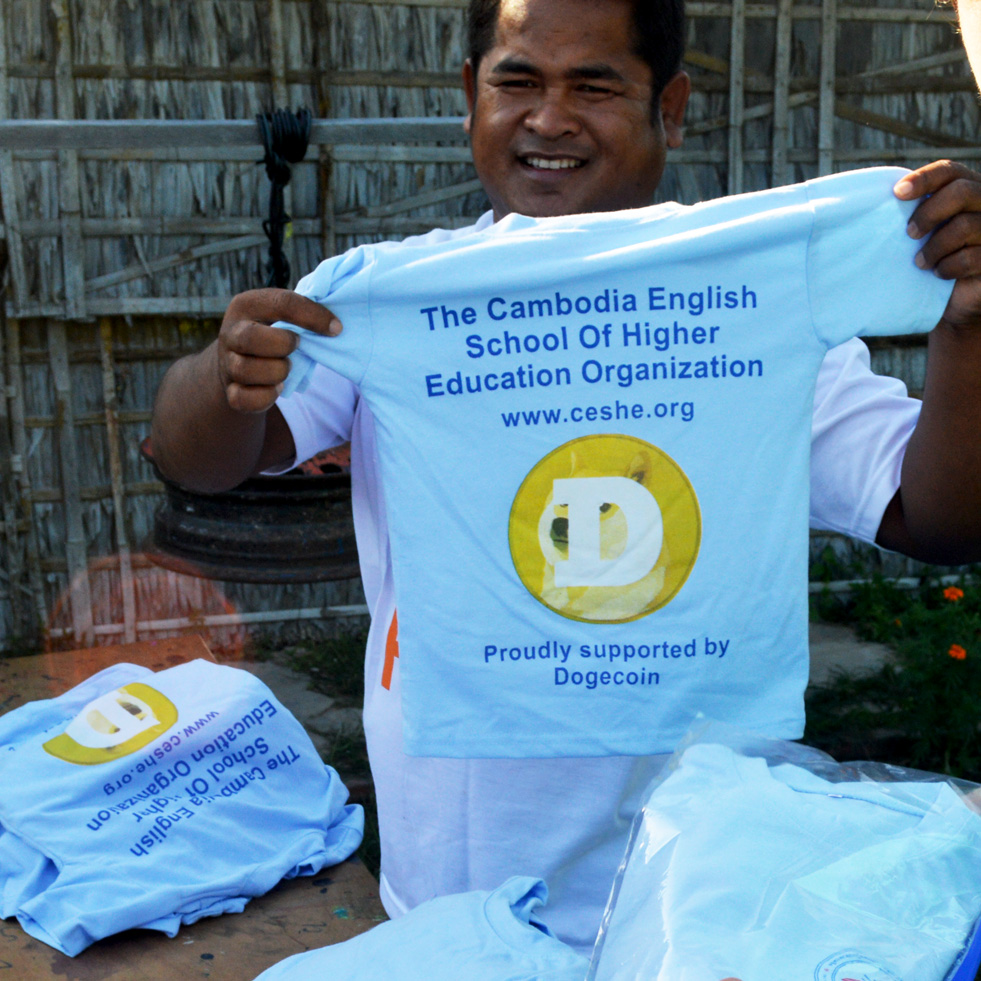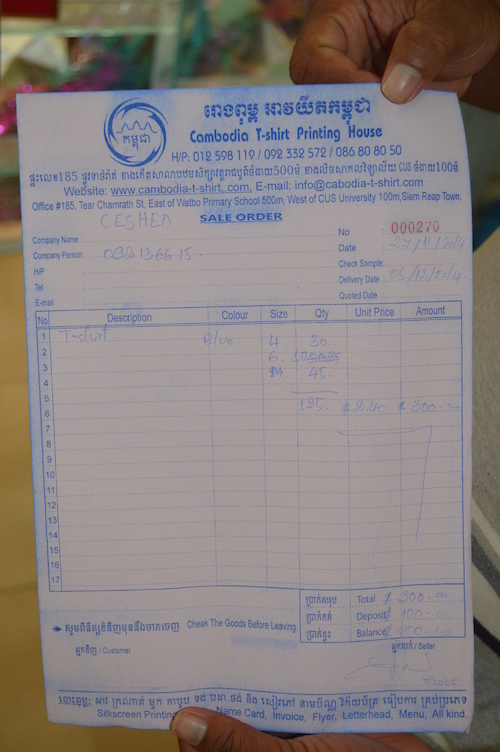Cambodian Free School Raises Dogecoins

 Back in June, the Cambodian English School of Higher Education raised funds in an effort to provide uniforms for its students.
Back in June, the Cambodian English School of Higher Education raised funds in an effort to provide uniforms for its students.
Charity in the Face of Such Theft
“This week I have been fundraising online, but I wasn’t asking for dollars, euros or pounds; I was asking for dogecoin, an online crypto currency that is often referred to as ‘the money of the internet,’” software developer and school volunteer Daniel Dawson, a native of Queensland, Australia, wrote in a blog post at the time. The fundraiser was successful in spite of the controversy going on around the Moolah exchange. “Well after the Moolah incident, /r/dogecoin participation has been greatly reduced,” said Dawson in an IRC interview with CCN.com.” He says he had previously raised $500 in Doge for a toilet block and that that fundraiser was monumentally, quickly successful in comparison.
The Mechanics of Fundraising with Cryptocoins
Funds were raised in three ways: Dogeraiser.com, Reddit tips, and through the legendary tipping frenzy that is the official Dogecoin IRC channel. At the time, Dogecoin was trading at roughly the same price it is now, around 60 Satoshi each, or about 1000 Doge for about 20 cents. The goal for the t-shirts was thus 12 million Dogecoins. As you can see from the below photo, the t-shirts were recently purchased.
Dawson says that most of the kids that attend the free school live on about $40 per month. The school has about 12 laptops which they use to teach the kids valuable skills like word processing and the basics of using a computer – skills which, he says, they would not be able to acquire otherwise. This offers these children a way out of their circumstances because they will have skills that many others in the marketplace simply will not. The advantages of learning English from a native speaker and knowing how to run a computer add up to making them more desirable employees.
What’s in Store
As to future fundraising plans for the school, it’s a matter of priorities. Uniforms are nice and more computer equipment wouldn’t be a bad thing, but without better buildings in which to secure that equipment it would be a waste, and without the security of owning the land the school sits on, all efforts could be in vain. At any time, says Dawson, the owner of the land could severely worsen the school’s prospects in favor of a higher paying tenant or sale of the land.
In answer to your question about the most important thing – I think the first thing would be to buy the land rather than lease it. We have had headache and worry about losing the school as the lease goes to someone else . Basically we are renting the land, and the leasor could turn around and either up the price or lease to someone else.
Dream Goal: Ð195 Million
The land could be purchased for about 195 million Dogecoins or 112 BTC or $40,000 USD, which is one of the two primary currencies used in the region. In fact, as depicted below, the shirts were purchased for $300 US Dollars, which Dawson says he converted in the usual way and withdrew through an ATM like he would a normal transaction. The prospect of getting Cryptocurrencies accepted at local businesses in the region is ways off, but not inconceivable, he feels.

This is a very small amount for land to those of us in the Western world and at first glance might seem unbelievable. But given that most people in the area earn less than $50 per month, this price is a fortune, and local efforts might never prevail. Interested people can contribute in a small way on the organizations website by purchasing 1 square meter of the land for $20. The site recently started accepting Cryptocurrency donations through CoinPayments.net, a processor that accepts a multitude of coins including Megacoin, HTML5, Feathercoin, and Reddcoin.
The effort has instilled an interest in digital money in the kids at the school, says Dawson. When asked if he believed it empowered them with the idea that their money would be equally as valuable as someone else’s money somewhere far away, he said yes and added,
Most of them earn about $40 a month, so $2 for about an hour’s work isn’t bad.
Do you think Cryptocurrencies can be used as a force for good in the world? Comment below!
Images from Cambodian English School of Higher Education and Shutterstock.